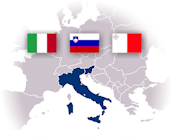Synonyms: PlGF; placental growth factor


Reactivity
Anti-Human
Applications
WB, IHC
Source / Host
Mouse
Clone
(#2D93)
IsoType
IgG1
Shipment
RT
Long Term Storage
Lyophilized samples are stable for 2 years from date of receipt when stored at -20°C. Reconstituted antibody can be aliquoted and stored frozen at < -20°C for at least six months without detectable loss of activity.
Description
Placenta growth factor (PlGF) is a member of the PDGF/VEGF family of growth factors that share a conserved pattern of eight cysteines. Alternate splicing results in at least three human mature PlGF forms containing 131 (PlGF1), 152 (PlGF2), and 203 (PlGF3) amino acids (aa) respectively. Only PlGF2 contains a highly basic heparinbinding 21 aa insert at the C-terminus. In the mouse, only one P lGF that is the equivalent of human PlGF2 has been identified. Human PlGF1 shares 56%, 55%, 74% and 95% aa identity with the appropriate isoform of mouse, rat, canine and equine PlGF. PlGF is mainly found as variably glycosylated, secreted, 55 - 60 kDa disulfide linked homodimers. Mammalian cells expressing PlGF include villous trophoblasts, decidual cells, erythroblasts, keratinocytes and some endothelial cells. Circulating PlGF increases during pregnancy, reaching a peak in mid-gestation; this increase is attenuated in preeclampsia. However, deletion of PlGF in the mouse does not affect development or reproduction. Postnatally, mice lacking PlGF show impaired angiogenesis in response to ischemia. PlGF binds and signals through VEGF R1/Flt1, but not VEGF R2/Flk-1/KDR, while VEGF binds both but signals only through the angiogenic receptor, VEGF R2. PlGF and VEGF therefore compete for binding to VEGF R1, allowing high PlGF to discourage VEGF/VEGF R1 binding and promote VEGF/VEGF R2mediated angiogenesis. However, PlGF (especially PlGF1) and some forms of VEGF can form dimers that decrease the angiogenic effect of VEGF on VEGF R2. PlGF2, but not PLGF-1, shows heparindependent binding of neuropilin (Npn)-1 and Npn2. PlGF induces monocyte activation, migration, and production of inflammatory cytokines and VEGF. These activities facilitate wound and bone fracture healing, but also contribute to inflammation in active sickle cell disease and atherosclerosis.
ESCLUSIVAMENTE PER USO DI RICERCA (RUO) e non per uso terapeutico o diagnostico su uomini o animali. Il prodotto NON è un Dispositivo Medico o un Diagnostico in Vitro.
PRODUCT FOR RESEARCH USE ONLY (RUO) and not for therapeutic or diagnostic use on humans or animals. The product is NOT a Medical Device or an In-Vitro Diagnostic (IVD).



